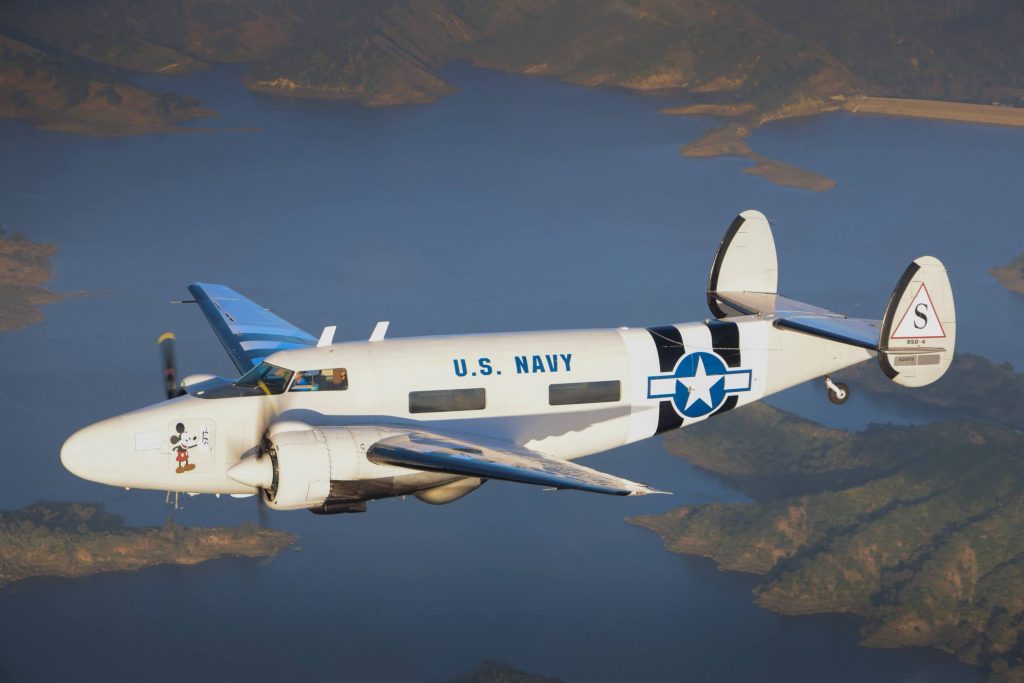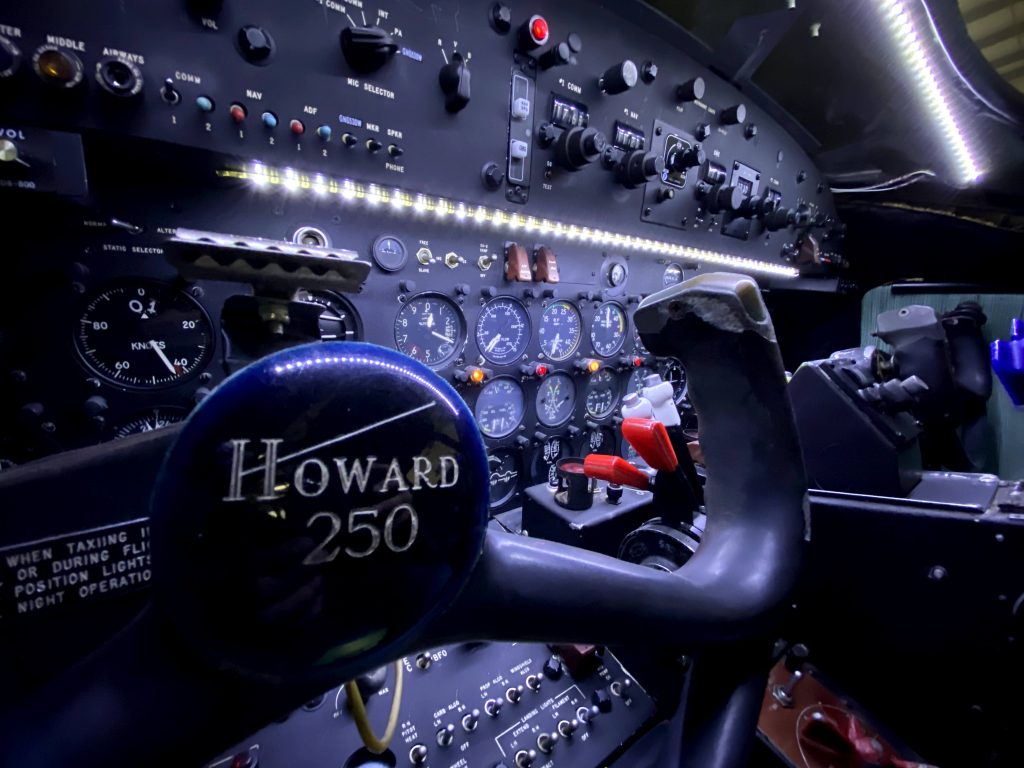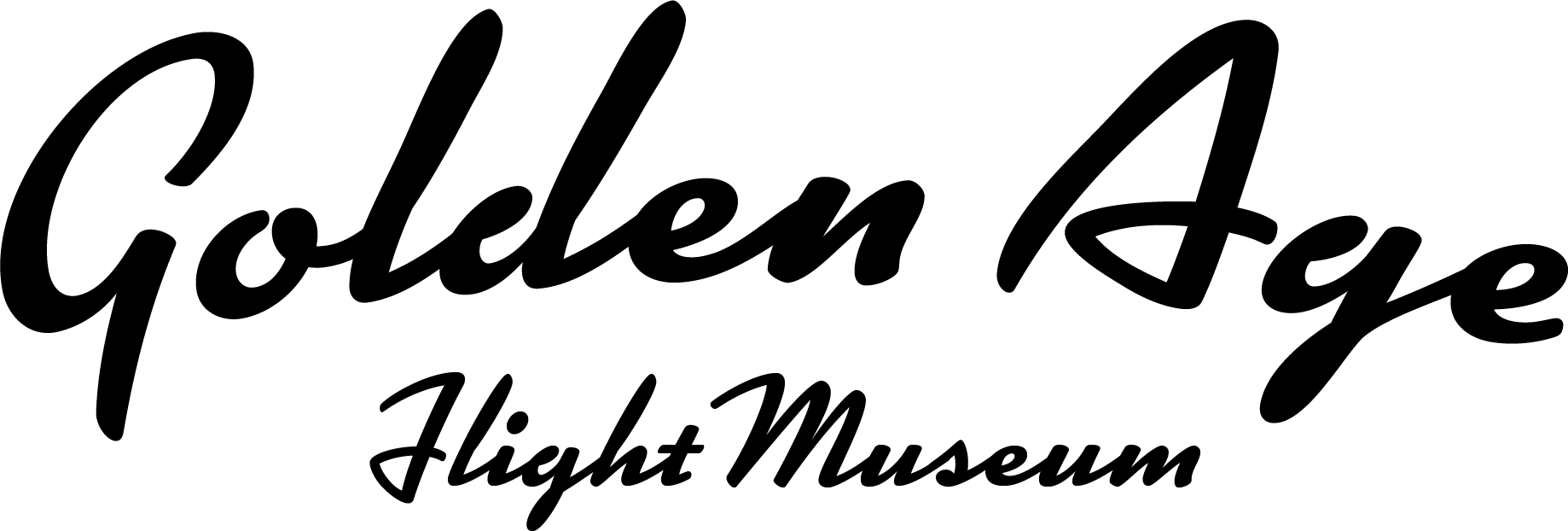Howard 250 – Lockheed Lodestar corporate aircraft conversion

Beginning in 1935, Lockheed developed the Model 10 Electra. With stiff competition from the Douglas DC-3, the Model 10 was stretched into the Model 12, and eventually the Model 14 Electra, which first flew in 1937. Despite having excellent performance and passenger comfort, it was more expensive to operate than the larger DC-3. In order to improve the economics, Lockheed stretched the fuselage even more to allow two additional rows of seats to be installed.
The prototype for the revised airliner, designated Model 18 by Lockheed, was converted from the fourth Model 14, one of a batch which had been returned to the manufacturer by Northwest Airlines after a series of crashes. The modified aircraft first flew in this form on September 21, 1939, another two prototypes being converted from Model 14s, with the first newly built Model 18 flying on February 2, 1940 with a total of 625 variants built.
After WWII the economy was booming and demand for corporate aircraft had never been stronger. Large companies were already purchasing surplus Lodestars and fitting them with executive seating and plush interiors to travel long distances.

Dee Howard, an aircraft engineer in San Antonio Texas wanted to build a corporate aircraft from scratch as a clean sheet design. He quickly realized it was cost prohibitive and decided to improve the performance of Lodestars already operating and develop his own version, the Howard 250.
The conversion was to prove popular with about 22 aircraft modified in the early 1960s in San Antonio Texas.
- Some of the upgrades include:
- Increased fuel capacity to 1100 gallons
- Gross takeoff weight increased to 22,500 lbs.
- Extended wing tips
- Specially developed square tip propellers
- Engine cowling to nacelle streamlining
- High flow exhaust system
- Two speed superchargers
- Engine fire extinguishers
- Electric elevator trim
- In-flight fuel dump system
- Streamlined flap and wing trailing edges
- Fully enclosed landing gear doors
- 12 place oxygen system
- Stretched cabin picture windows
- Curved glass windshields
- Extended cockpit side windows
- Autopilot
- Extended nose for Bendix weather radar
- Freon air conditioning
- Stinger tail for streamlining
- Deice boots
Howard Aero also developed the Howard 350, and much larger Howard 500.

Our aircraft was finished in 1961 and based in New York and Washington DC.
Looking back on aviation history at the time, the Howard 250 was a tough sell to corporations needing long range private aircraft.
The Howard 250 and 500 were too late to the game.
See the following list of new turbojet corporate aircraft competitors. Some flying before our Howard was even finished.
- Lockheed Jetstar – 1957
- Learjet 25 – 1963
- North American Sabreliner – 1958
- BAE Hawker 100 – 1962
- Gulfstream G1 – 1958
- Gulfstream G2 – 1966
- Beechcraft King Air – 1964
- Mitsubishi MU-2 – 1963
